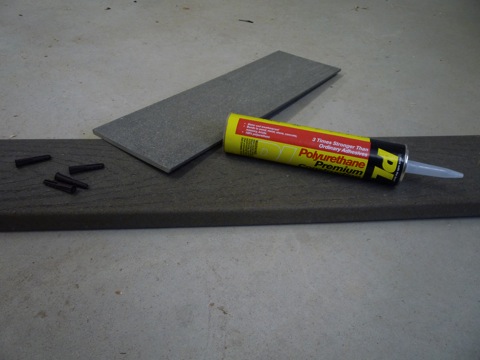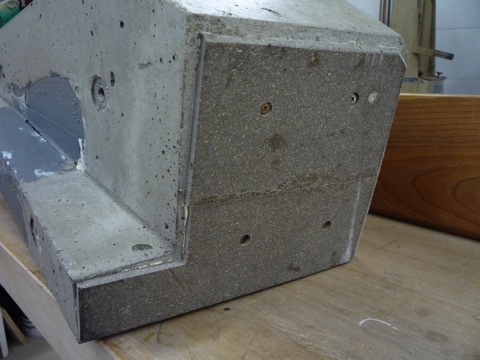Previous: Filling The Form
Next: Sealing
Non Marking Base:
If a casting is going to be used on a piece of furniture or as the base of a sculpture it is likely that it will come in contact with a hard surface. If that is the case then you are setting your casting up to chip as a result of the contact. If the client has a soft floor then you are going to scratch the floor with the heavy and abrasive casting. In either case you are better off if you have added a soft foot to the bottom of the casting. A perfect material is Trex. This wood product is made of recycled wood fibers and recycled plastic for use in decks. It can be worked like wood so it is a candidate to be re-sawed and then sent through the planer. There is a bit of prep work that can help. I often stick drywall anchors in the bottom side of the casting while the mix is still wet. Then I clip nails and use them to mark the Trex for countersunk holes. Stainless steel screws hold the Trex in place until the construction adhesive dries. Other situations will allow you to get away with only construction adhesive. Trex almost glides across the floor. Another bonus.

Trex in action. The color even matches the concrete enough that it is not a distraction if you catch a glimpse of it.


Trex in action. The color even matches the concrete enough that it is not a distraction if you catch a glimpse of it.

Previous: Filling The Form
Next: Sealing